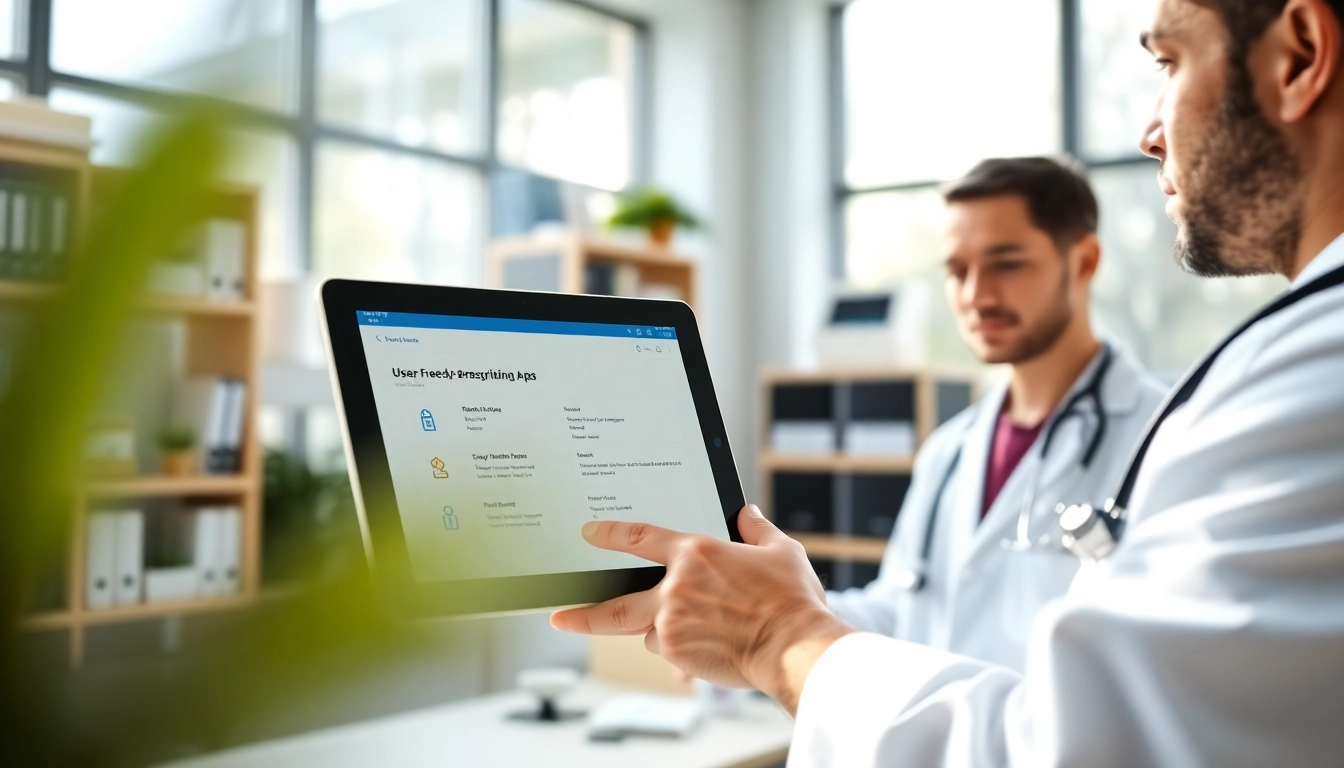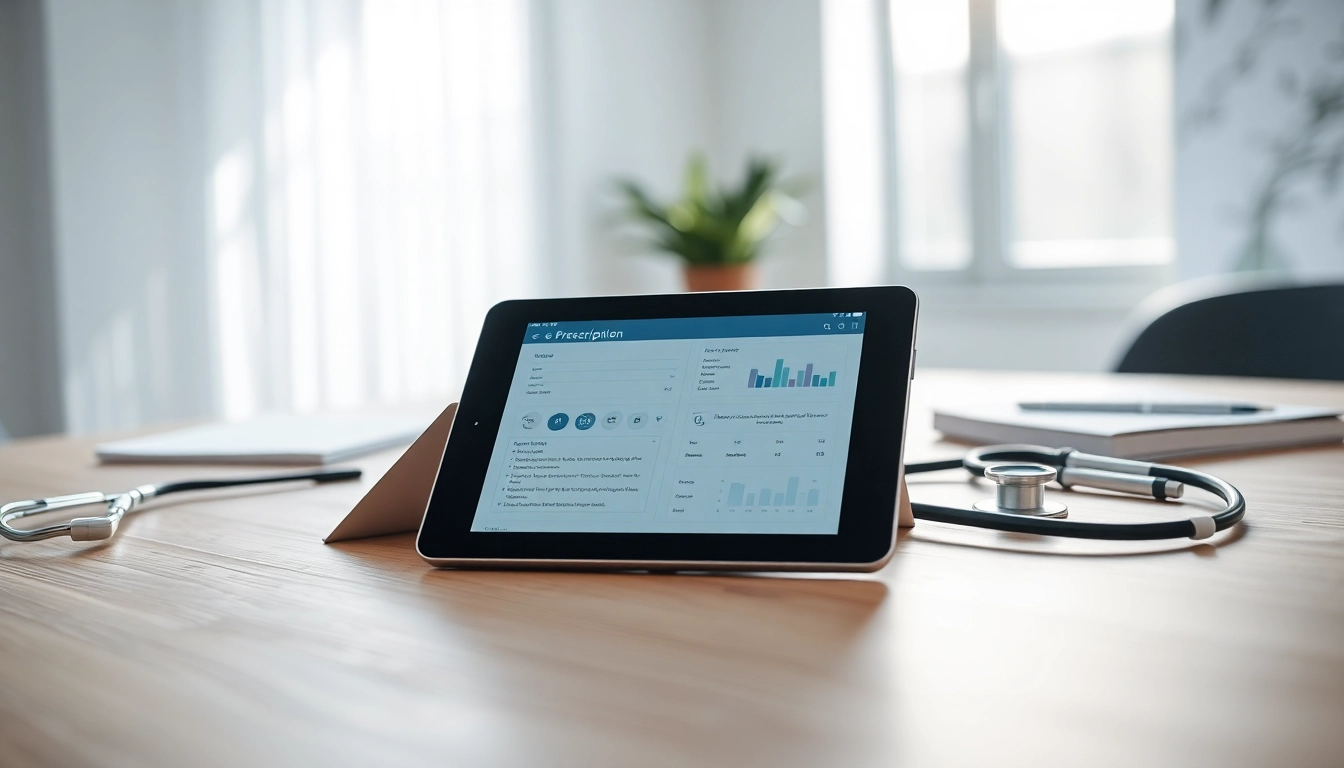Understanding Free Eprescription Apps
What Are Free Eprescription Apps?
In an increasingly digital world, healthcare providers are turning to technology to streamline their practices. Among the valuable tools available are free eprescription apps, which facilitate the electronic submission of prescriptions to pharmacies. These applications allow clinicians to send prescriptions directly from their devices, providing a more efficient alternative to traditional handwritten prescriptions.
Free eprescription apps are specifically designed to help physicians, nurse practitioners, and other authorized healthcare providers create, update, and manage prescriptions without the hassle of paperwork. The apps are typically integrated into electronic health record (EHR) systems, ensuring that medication management is a seamless point in the patient care continuum.
Key Features of Free Eprescription Apps
When assessing the utility of free eprescription apps, it’s important to understand their core features which distinguish them from conventional methods:
- Intuitive Interface: Many of these applications feature user-friendly designs, allowing healthcare providers to navigate the software easily and efficiently.
- Real-time Prescription Management: These apps often provide updates on the status of prescriptions, helping providers monitor whether a patient has filled their medication in a timely manner.
- Drug Interaction Alerts: Free eprescription apps frequently include alerts for potential drug interactions, ensuring that prescribers are informed of any safety concerns before approving a medication.
- Patient Records Integration: The best applications allow for direct input from patient records, minimizing data entry and increasing accuracy in prescribing.
- Accessibility: Many free eprescription apps are mobile-friendly, allowing healthcare providers to manage prescriptions on the go.
Benefits of Implementing Free Eprescription Apps
Utilizing free eprescription apps carries several advantages that enhance both provider efficiency and patient care:
- Improved Accuracy: With automated systems, the chance of errors related to handwriting or miscommunication is significantly reduced.
- Increased Efficiency: These applications enable faster prescription processes, reducing wait times and improving the overall patient experience.
- Cost Savings: Using free tools helps healthcare practices save on administrative costs associated with managing paper prescriptions.
- Enhanced Patient Engagement: Patients can receive their prescriptions promptly, potentially leading to higher adherence to medication regimens.
- Better Tracking and Reporting: Free eprescription apps often include features for tracking prescription history and generating reports, useful for audits and assessments.
Selecting the Right Free Eprescription App
Assessing Your Practice Needs
Before choosing a free eprescription app, it’s critical to assess the specific needs and requirements of your healthcare practice. Factors to consider include:
- Patient Volume: The number of patients you deal with on a daily basis will influence the complexity of the app you’ll need.
- Integration with Existing Systems: Ensure that the eprescription app can seamlessly integrate with your current EHR or practice management software to maximize efficiency.
- Feature Set: Determine which features are essential for your practice. For instance, if you frequently prescribe controlled substances, an app that supports electronic prescriptions for controlled substances (EPCS) is crucial.
Top Considerations in Choosing Free Eprescription Apps
Once you’ve assessed your needs, consider these factors to pinpoint the best app for you:
- Compliance and Security: Ensure that the app adheres to regulations such as HIPAA to protect patient privacy and data security.
- User Experience: Investigate user reviews and ratings on various platforms to gauge the app’s usability from the perspective of other healthcare professionals.
- Support Services: Determine if the app offers customer support and reliable resources for troubleshooting different issues that may arise.
Common Pitfalls to Avoid
Choosing the wrong eprescription app can hinder practice efficiency rather than enhance it. Avoid these common mistakes:
- Overlooking Integration Capabilities: Failing to assess compatibility with your current systems may lead to data silos and inefficiencies.
- Ignoring User Feedback: User reviews can provide insights into any hidden frustrations or common issues with the app.
- Settling for Limited Features: A free app may have limitations that may not meet your practice’s long-term needs as it grows.
How to Implement Free Eprescription Apps in Your Practice
Step-by-Step Guide to Setup
Implementing a new free eprescription app may seem intimidating, but by following a structured approach, the transition can be managed smoothly:
- Choose the Right App: After thorough assessment and evaluation, select an app that aligns with your needs.
- Create an Account: Follow the app’s process to set up an account and input essential practice information.
- Complete Initial Setup: Configure settings tailored to your practice, such as adding your drug formulary, setting up templates, and personalizing alerts.
- Integrate with EHR Systems: Conduct any necessary integrations with your existing electronic health records.
- Test the System: Run test prescriptions to ensure everything works as expected.
Integrating with Existing Systems
Integration is a critical phase when implementing free eprescription apps. Here’s how to align the new app with existing software:
- API Availability: Check if the app provides APIs that can facilitate integration with your existing EHR system.
- Data Migration: Plan for the transfer of relevant patient data to ensure continuity in care.
- Testing Interoperability: Conduct thorough testing to ensure that data moves seamlessly between systems.
Training Your Staff Effectively
Once the app is set up, training is imperative to ensure that staff members are familiar with its functionalities:
- Conduct Training Sessions: Organize comprehensive sessions to teach staff how to use the app effectively.
- Utilize Resources: Leverage any available user guides, video tutorials, or online resources provided by the app developers.
- Encourage Questions: Create an open environment where staff can ask questions and discuss concerns about the new system.
Comparing Free Eprescription Apps: A Feature Overview
Functionality Comparison
There are multiple free eprescription apps available in the marketplace. When comparing, focus on:
- Prescription Types Supported: Some apps may limit the type of prescriptions, particularly in regards to controlled substances.
- Billing and Insurance Capabilities: Evaluate whether the app can assist with handling patient billing and insurance claims.
- Notifications and Alerts: Compare how each app handles alerts for refill reminders, drug interactions, and patient follow-ups.
User Experience and Interface Review
User experience is crucial in ensuring that clinicians can operate effectively. Consider the following:
- Intuitive Navigation: How easily can physicians navigate the app during busy office hours?
- Visual Design: Does the app use visual design principles to enhance readability and minimize eye strain?
- Mobile Compatibility: Can the app function flawlessly on mobile devices for clinicians who need to prescribe on the go?
Cost Efficiency and Value Assessment
Although many free eprescription apps are available, assessing their long-term value is key:
- Hidden Costs: Investigate whether there are any charges attached to premium features that may be critical for your practice.
- Return on Investment: Conduct a cost-benefit analysis to identify whether the time and resource savings justify the app’s operational costs.
- Service Quality: Evaluate whether the quality of customer service is sufficient in addressing potential tech issues.
Future Trends in Eprescribing Technology
Emerging Technologies in Free Eprescription Apps
As healthcare continues to advance, the realm of eprescribing is also evolving. Anticipated developments include:
- Artificial Intelligence: AI integration could streamline prescription processes by suggesting medications based on patient history and preferences.
- Blockchain Technology: This may offer increased security for patient records and prescriptions, enhancing patient privacy.
- Advanced Analytics: Future applications may feature robust analytic tools to help providers understand patient medication adherence trends.
The Role of Telemedicine and Eprescribing
As telemedicine continues to gain prominence, the integration with eprescribing apps becomes more crucial:
- Enhanced Patient Care: Telehealth appointments can seamlessly lead to prescriptions, improving continuity of care.
- Real-time Decision Support: Providing providers with instant access to patient information during virtual visits can lead to more informed medication decisions.
Regulatory Changes Affecting Free Eprescription Apps
Regulatory environments continually evolve, impacting how e-prescribing is conducted:
- Policy Enhancements: Ongoing regulatory updates seek to improve safety and efficacy in the prescribing process.
- Compliance Requirements: Stay abreast of new compliance mandates to ensure that your app remains current and compliant.



